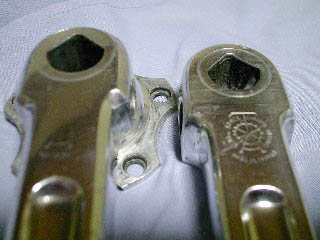Sigh...I mean cough, cough...Or do I mean burble, burble?
It's official: President Donald Trump (I never imagined using that title and that name together!) has withdrawn the United States of America, the world's second largest polluter (and the largest, by far, per capita) from the 2015 Paris climate accord.
I would love to know what he knows that the leaders of 194 other countries don't know.
Actually, I don't think it's a matter of what he knows or even who he knows--after all, even Rex Tillerson couldn't sway him.
If anything, his action seems to be a result of something that is a personality trait in children but is a personality disorder in a 70-year-old man.
There might be some scientific or clinical term for it. If there is, I am not aware of it--after all, I am not a professional in mental health or a researcher in neurology or brain science. So I will describe it as best I can.
Here goes: He is possessed by a particular kind of petulance: the kind that causes children to be resentful and throw tantrums when one of their siblings or peers gets anything he or she wants. That child equates the other kid getting the toy or later bedtime or whatever with not getting it him or her self. In other words, they think that whatever the other kid got came at his or her expense: You gave it to him instead of me.
Well, substitute countries (except for Russia, Saudi Arabia or Israel) for kids, and you have Donald Trump's mentality. If France or Japan or England or China or Germany or, God forbid, Mexico, should get what it wants, then it must mean that his beloved (as long as it profits him) good ol' USA must have been deprived of, or cheated, out of something.
I'm not sure that even Jeff Sessions thinks that way--or if he does, not nearly as pathologically as the guy who appointed him does.
Many in-the-know folks have pointed out that pulling out of the accord will one day (probably sooner than later) cost the US its leadership role in technology: After all, so many of the forthcoming developments will, by necessity, have to do with reducing the causes of climate change. This, of course, is bad for business, at least in the US: All of the new technologies to prevent, combat or deal with climate change are going to come from China, India, Europe and possibly other places.
The Reign of Terror might have been bad for a fabricant de chapeaux, but it was good for folks who made scaffolding and steel blades. Likewise, even though opportunities will be lost as a result of pulling out of the Paris accord, other entrepreneurs will benefit. Among them will be the folks who manufacture things like this:
and this:
It's official: President Donald Trump (I never imagined using that title and that name together!) has withdrawn the United States of America, the world's second largest polluter (and the largest, by far, per capita) from the 2015 Paris climate accord.
I would love to know what he knows that the leaders of 194 other countries don't know.
Actually, I don't think it's a matter of what he knows or even who he knows--after all, even Rex Tillerson couldn't sway him.
If anything, his action seems to be a result of something that is a personality trait in children but is a personality disorder in a 70-year-old man.
There might be some scientific or clinical term for it. If there is, I am not aware of it--after all, I am not a professional in mental health or a researcher in neurology or brain science. So I will describe it as best I can.
Here goes: He is possessed by a particular kind of petulance: the kind that causes children to be resentful and throw tantrums when one of their siblings or peers gets anything he or she wants. That child equates the other kid getting the toy or later bedtime or whatever with not getting it him or her self. In other words, they think that whatever the other kid got came at his or her expense: You gave it to him instead of me.
Well, substitute countries (except for Russia, Saudi Arabia or Israel) for kids, and you have Donald Trump's mentality. If France or Japan or England or China or Germany or, God forbid, Mexico, should get what it wants, then it must mean that his beloved (as long as it profits him) good ol' USA must have been deprived of, or cheated, out of something.
I'm not sure that even Jeff Sessions thinks that way--or if he does, not nearly as pathologically as the guy who appointed him does.
Many in-the-know folks have pointed out that pulling out of the accord will one day (probably sooner than later) cost the US its leadership role in technology: After all, so many of the forthcoming developments will, by necessity, have to do with reducing the causes of climate change. This, of course, is bad for business, at least in the US: All of the new technologies to prevent, combat or deal with climate change are going to come from China, India, Europe and possibly other places.
The Reign of Terror might have been bad for a fabricant de chapeaux, but it was good for folks who made scaffolding and steel blades. Likewise, even though opportunities will be lost as a result of pulling out of the Paris accord, other entrepreneurs will benefit. Among them will be the folks who manufacture things like this:
 |
| From The Human Cyclist |
and this:
 |
| From Cyclelicio.us |







